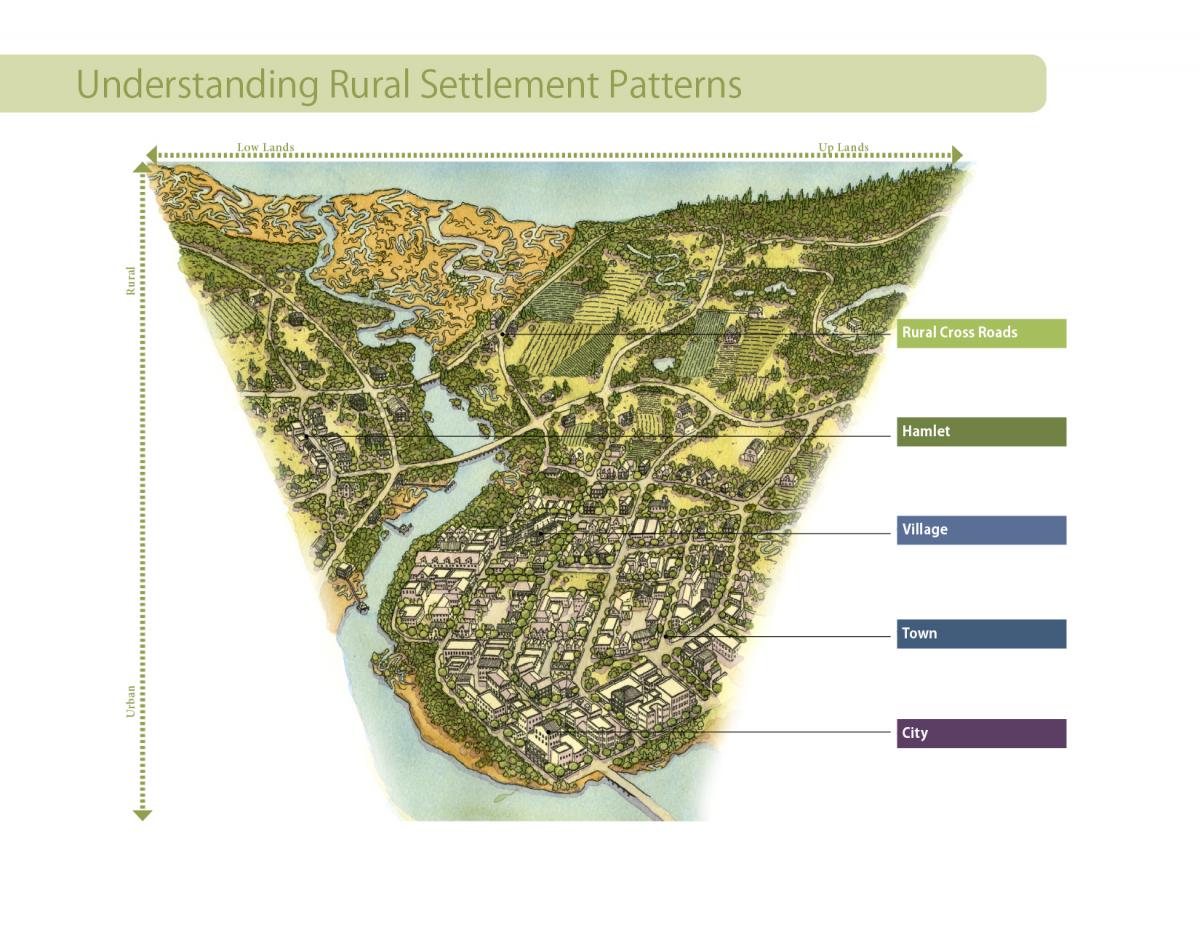Beaufort County, a Lowcountry South Carolina region of historic towns and magnificent estuaries, is growing at a phenomenal rate—putting pressure on public services, infrastructure, quality of life, and the natural environment. Now, a form-based code backed by a shared growth vision in three Comprehensive Plans has been devised as a key tool to achieve a more sustainable future.
“The Code recognizes that Beaufort County has a very diverse natural and built environment,” notes Rob Merchant, county planner, “and provides context-sensitive tools that promote walkable urbanism distinguishing between a small, traditional rural crossroads and an urban neighborhood on the edges of a municipality.” The code was created in close cooperation with the city of Beaufort and the towns of Bluffton and Port Royal to map a seamless transition between municipalities and the county, Merchant says.

Extensive community engagement was built into the process, including a series of four multi-day charrettes focusing on sub-regions of the county. This public process covered a wide range of people and places, “from the unique Gullah community and heritage found on the rural island of Saint Helena, to the rapidly urbanizing highway corridor to Hilton Head and the quaint town setting of Port Royal,” Opticos Design reports.
Instead of subdivisions, shopping centers, and office parks, the code anticipates development in the form of neighborhoods, hamlets, town centers, and other “place types” with a definable character, based on the rural-urban Transect.
Photo documentation, mapping, and assessing the form of rural development patterns and their relationship with the natural environment were critical to the process. The unique aspects of low country urbanism and architecture were reinforced throughout the code and within supporting architectural guidelines.
At 924 square miles, Beaufort County is one of the largest jurisdictions to adopt a form-based code. The code is designed to protect natural and undeveloped land from sprawling development patterns far into the future
Project Details
Beaufort County Multijurisdictional Form-Based Code/Land Development Code Beaufort County, South Carolina
Year
Ongoing
Characteristics
Charter Award
Merit Award
